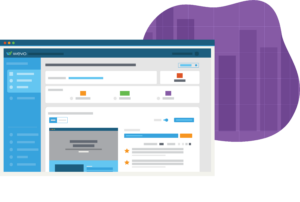Contents
The demand for insights is outpacing the natural supply of research professionals: organizations committed to including UX research in their product, design and marketing workflow are struggling to keep up, organizations not focused on UX Research are falling farther and farther behind.
There are several factors you can expect to come up against when seeking to grow your capacity to generate user experience insights. It takes time to collect the evidence and deliver the results that demonstrate to higher leadership that UX research is worth investing in. Another challenge is steering the company culture and convincing employees that UX research can unlock greater potential.
In the UX industry itself, demand for insights is outpacing the natural supply of research professionals, which can be a further barrier to establishing insights as a service. According to the Nielsen Norman Group, by the year 2050, the market will require 100 million UX research professionals in order to meet the user experience needs of organizations. To satisfy their organization’s demand for insights, creative leaders will need to employ innovative solutions.
The ultimate goal is to empower everyone in your organization to do research and gain insights so that your organization isn’t dependent on outside consultants. By giving in-house employees the skills and knowledge to conduct their own UX research, you gain the capacity to continuously harvest cross-channel insights that will lead to better outcomes.
The 3 Stages of a Next-Generation User Experience Organization
So, how do you get to this level of self-sufficiency? Understanding where you are now in terms of factors like resources, data, and company culture is an important first step in finding out where you can grow. Becoming an insight-led organization isn’t so much a race as it is a strategic evolution. In order to assess your own organization’s progress, let’s look at three different stages of an organization’s capacity to collect and analyze user-centered data.
UX Evangelists
At this beginning stage, there are typically just one or a few “evangelists” of UX research that promote it throughout the company. They will likely need to do a lot of initial legwork to convince the company to adopt user experience research methods and expand their UX testing and analysis activities. This is a make-or-break stage where the proof is in the pudding. Early successes—even small ones—will gather steam for more robust practices.
Qualitative and quantitative insights are gathered independently of each other on a small scale at this stage. There may be just 1-2 office user experience research roles in the company, and they are most likely to use small focus groups to collect data, with minimal UX analysis tools at their disposal. Some areas of the organization are impacted by the results, but the overall process and effect is sporadic. This is not yet an insight-led organization—but you have to start somewhere!
In order to transition a brand from a small group of UX evangelists to the next stage of UX growth, early adopters need to gain momentum by demonstrating the value of UX research. This first stage requires presenting concrete results in the form of case studies and formal reports, as well as educational content about how UX can impact a brand, to decision-makers on teams across the organization and higher leadership. If small-scale, early efforts are well-coordinated, a brand can reach the next stage where the broader organization begins to adopt more UX practices.
Intermediate Advancers
The middle stage depicts an organization that has reaped the rewards of its early UX research practices, and leadership is seeking further problem and solution validation. Efforts become more strategic, with qualitative and quantitative evidence gathered in tandem rather than separately. The organization has an expanded team dedicated to UX testing and analysis and formal procedures are put in place.
Most notably, at this stage, upper leadership is invested in UX research, and it holds a central role in business decisions. Insights are considered the key to understanding the customer and driving consistent results. Enough results have come in that offer consistent insights and returns to perpetuate an ongoing conversation about user experience across the entire organization. The brand’s UX team should conduct centralized outreach to individual departments about the need for UX research in their area.
Transformative Leaders
When an organization reaches the final stage of becoming insight-driven, leadership has adopted a definitive vision and philosophy for the organization’s UX research efforts. The growth of the user experience team has warranted the creation of an upper-management role in UX, such as a Chief Experience Officer or Chief Product Officer. Most, if not all, areas of the organization are involved in UX research at this stage, to varying degrees.
With user experience fully embedded into the work culture and business strategy, qualitative and quantitative insights are gathered for every release of the product. Standardized processes and procedures are in place, and a robust toolset for user experience testing and analysis is on hand. Individual teams are encouraged and empowered to conduct their own research within their area, while the dedicated user experience team assists them as well as tackling complex, cross-channel problems.
Steps to Scaling UX Research for Sustainable Growth
The stages of growth are benchmarks for becoming an insight-led organization. It can take several years to advance from being an Early Adopter to an Intermediate Advancer, and many more to evolve into a Transformative Leader, but this shouldn’t discourage anyone from trying. A strong user experience strategy and the resources to carry it out are essential assets in any business. Continuous gain of momentum is possible at any stage by incorporating the following guidelines.
Expand Accessibility to User Research
While it may be necessary to start small in the beginning, ultimately your organization will thrive best if all teams have the time and ability to conduct UX research. A dedicated user experience team is best for generative research—that which helps define the problems of your customers so you can seek solutions. Other teams can leverage that data to do their work and improve products, as well as conduct evaluative research, which reveals how customers respond to the product. Access to good tools makes many aspects of life as a UX researcher effortless. It puts power in the hands of other teams who may not have their expertise, but have a great need for insights to make the best decisions.
This multi-pronged approach makes it possible to gather effective insights from all angles of the business. Sharing data across all teams helps keep efforts consistent and cohesive, inspiring productive dialog and eliminating blind spots.
Simplify UX Research with Automation
Gathering user experience data can be time-consuming. Some valuable insights can only be gained from methods like focus groups, which require a dedicated effort from teams. However, other user research can be automated so long as it doesn’t take away from the net gain. Tools for automation can be leveraged for essential tasks like finding and cleansing panelists and panel responses and number-crunching the quantitative data. More nuanced qualitative data collection and complex analysis is best left to humans.
Automation can take different forms and should be considered for all tasks involved in UX research, from collecting data, to organizing and sharing it. Create templates for gathering and reporting data so that no one has to start from scratch. Design a method for storing, cataloging, and accessing data and insights.. There are myriad tools available for automating these different tasks, which can help your team more rapidly identify trends and build strategies around them.
Establish Standardized Methods and Key Findings
A “work smarter, not harder” approach is also important when creating and implementing processes for user experience analysis. Ideally, you want to be able to generate insights as quickly and efficiently as possible, but with attention to detail and accuracy. Standardizing how your company interprets findings, using defined processes and tools, reduces the cognitive load on employees and makes it easier for them to identify actionable items from the insights. Including user research in the full release cycle for each team, from design, to marketing to product sprints, creates a coherent narrative of UX insights that can be utilized to the fullest extent.
Final Thoughts
Following the above guidelines will put your organization on track to developing a strong insight-driven culture. Good communication will be the glue that holds it all together. A lot of the buy-in process boils down to how you communicate the importance and value of user experience research. Carefully crafted messages must make it clear how worthwhile the investment is without coming across as repetitive.
Part of the strategy is having your pitches at the ready and then giving them at the precise moment they’re needed. Reading the room, monitoring progress, and responding to concerns and issues appropriately will avoid the derailment of your efforts and keep you on a steady path of growth.



